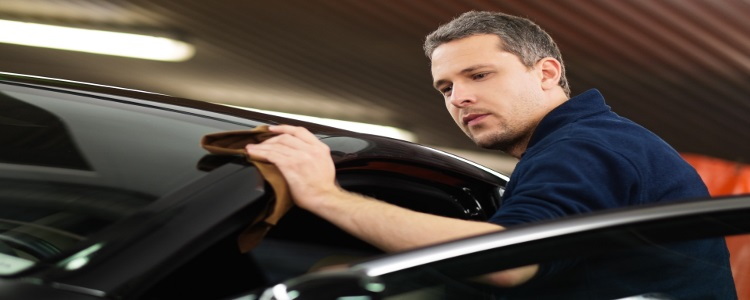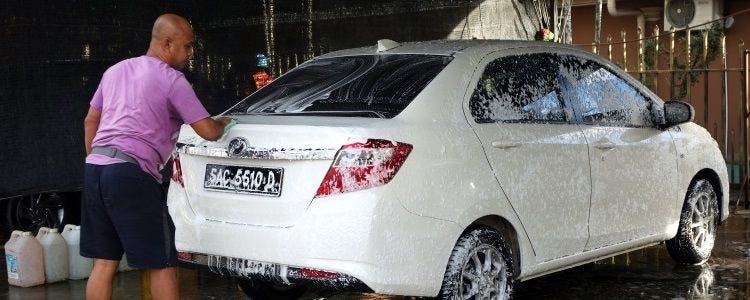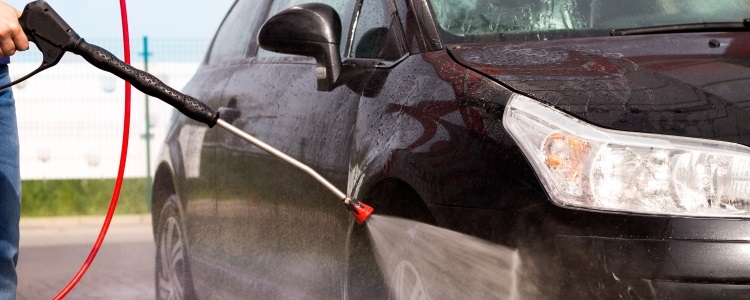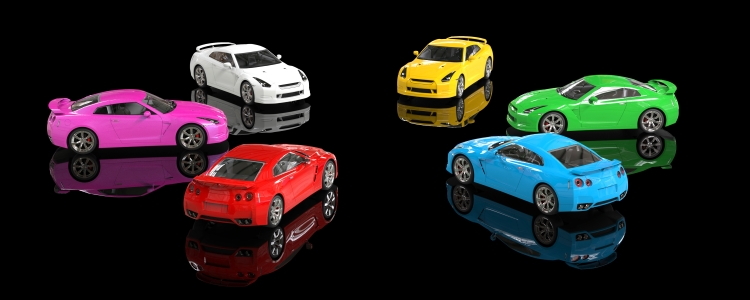October is Fall Car Care Month, and the Auto Credit Express team thinks a sunny autumn afternoon is the perfect time to make sure your car is ready for winter. Besides routine maintenance checks like tire pressure and tread wear, windshield wipers and fluid, and brakes and shocks, have you considered your car’s finish?
Is your car’s paint contaminated? Will your vehicle’s paint finish pass the plastic bag test? Have you ever clayed your car?
Modern Car Paint Jobs
Modern automotive paint jobs are typically made up of three layers. A thin coat of primer atop the bare metal body panel protects against corrosion and helps the colored base coat adhere to the vehicle. The base coat, or color coat, is applied next and gives the vehicle its actual color. Finally, a thicker layer of clear coat is applied to improve the overall depth and shine of the car’s paint job.
Modern clear coats are very hard and durable. They protect the base coat from physical damage like chips and scratches, and from fading caused by UV rays. Only serious scratches will penetrate a vehicle’s clear coat, which is why most minor scratches can be safely removed or minimized with polishing.
Car Paint Contamination
So, then, what is a contaminated paint job? Your car’s paint faces more hazards on the road than just chips and scratches. Bird droppings, brake dust, rail dust, and general grit and pollution are all composed of small particles that can become embedded into the clear coat of an automobile finish. If your car’s paint job doesn’t feel perfectly smooth after it's just been washed, you’re feeling these contaminants. It may feel gritty, like tiny grains of sand are stuck into your car.
The plastic bag test is an old detailer’s trick to make it easier to feel paint contaminants and see if your car could benefit from more attention than a regular wash. Place your hand inside a clean sandwich bag and gently rub the paint of a freshly washed and dried car through the bag. The smooth plastic bag will make any contaminants trapped in your paint job even more noticeable, and can be a sign that you need to give your car’s finish a little more attention.
Cleaning and Protecting Your Car's Paint
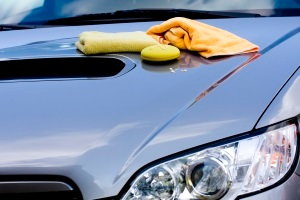 What can you do if your paint has contaminants? One powerful tool that professional automotive detailers have been using for years is paint cleaning clay. Paint cleaning clay is a synthetic polymer putty with the consistency of regular modeling clay. By spraying the car with a special lubricant and gently rubbing the clay over the surface of the vehicle, a detailer can safely remove contaminants that made the car feel gritty. It’s quicker and easier than polishing a car and actually lifts contaminants out of the paint – like a blackhead strip for your car. You can even flip the clay over and look at the nastiness that just came off your paint job.
What can you do if your paint has contaminants? One powerful tool that professional automotive detailers have been using for years is paint cleaning clay. Paint cleaning clay is a synthetic polymer putty with the consistency of regular modeling clay. By spraying the car with a special lubricant and gently rubbing the clay over the surface of the vehicle, a detailer can safely remove contaminants that made the car feel gritty. It’s quicker and easier than polishing a car and actually lifts contaminants out of the paint – like a blackhead strip for your car. You can even flip the clay over and look at the nastiness that just came off your paint job.
Luckily for consumers, paint cleaning clay has become widely available in the last few years. Automotive stores and even big box retailers like Walmart now carry kits for under $20 that contain everything you need to clay your car. Check the package for specific instructions, but the process typically involves lubricating a freshly washed car with the included 'detailer spray' product, then, working in small sections, simply rubbing with the clay in several passes in different directions to remove any contaminants.
When you’re happy with the results, wipe the paint dry with the included microfiber cloth and move on to another section of the car. Make sure to keep the surface sufficiently lubricated. When the clay starts looking dirty, simply knead it to expose another clean surface. Make sure your car is cool and in the shade – detailer’s clay will soften and make a mess if used on a hot car baking in the sun.
You can call it a day after you’ve finished claying your car, but if you want to protect your paint from future contamination and winter elements, you can put a coat of paint sealant on your car. Paint sealants are long-lasting synthetic car waxes that form a protective layer on top of your clear coat. Sealants can last for months, while waxes only last weeks. Future contaminants will get stuck in this protective layer and not your clear coat, so they can easily be washed away. If you really want to go the extra mile, the best time to polish a car is right after it’s been clayed, and if you protect the freshly polished paint with a coat of sealant, your car will look spectacular and be protected for the winter.
While it may seem foolish to make your car look so good before the salt sprays and slush of winter driving, a properly protected paint job will defend your automotive finish from the elements and can help retain your car’s resale value. Not only that, but a quick run through a touchless car wash will easily rinse grime off a sealed paint job, so you can make your car look fantastic if you need to show off this winter.
Getting Financed
If your find yourself needing a vehicle to spiff up for these cool autumn nights on the town, or if your paint job is less ‘contaminated’ and more ‘rusty,’ but you think credit problems will keep you from getting a loan on a new vehicle, think again! Auto Credit Express has been helping people with bad credit get new and used vehicle loans through our dealership network for almost 20 years, and we want to help you, too. Fill out our auto loan request form to get started on your path to a new car today!
